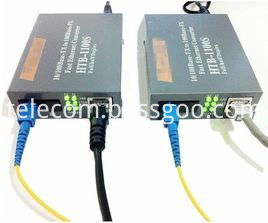According to first-hand information from Shenzhen Ruifeng Optoelectronics Co., Ltd., China's largest LED packaging factory, Chinese LEDTV manufacturers (such as Skyworth and Konka) are currently facing a serious LED supply crisis because Taiwan's main packaging company, Everbright It has been reluctant to release excess capacity to the Chinese packaging plant, but directly transferred the excess capacity to Samsung to give priority to Samsung's LEDTV capacity plan.
The most important reason is that Samsung is rich and has bought out the production capacity of Everlight to give priority to the demand for LEDs in Samsung's LEDTV manufacturing plan this year. It has implemented a bottom-up strategy for Chinese LEDTV manufacturers, so that they can taste the taste of a woman. For Samsung to achieve greater market share as much as possible to clear the obstacles on the way forward.
This year, the world's top 8 LEDTV suppliers plan to produce 47 million LEDTVs, including Samsung, LG Electronics, Sony, Sharp, Philips, Vizio, Panasonic and Toshiba. Currently, LED backlight panel suppliers on the market mainly include Samsung, Sharp, LG Display, CMO, AUO, Innolux and IPSAlpha.
Samsung plans to produce 12 million LEDTVs, of which 9 million LED panels are directly supplied by Samsung, 2.5 million LED panels are provided by CMOs, and 500,000 LED panels are supplied by Sharp.
LG Electronics plans to produce 7 million LEDTVs, of which LG Display's subsidiary supplies 5 million LED panels, AUO supplies 1.5 million LED panels, and Sharp supplies 500,000 LED panels.
Sharp plans to produce 7 million LEDTVs, all of which are supplied by itself. Sony plans to produce 6 million LEDTVs, of which Sharp supplies 3-4 million LED panels and Samsung supplies 2-3 million LED panels.
Philips plans to produce 4 million LEDTVs, of which Sharp supplies 2 million LED panels and LG displays 2 million LED panels. Toshiba plans to produce 3 million LEDTVs, of which Samsung supplies 2 million LED panels and LG displays 1 million LED panels.
Vizio plans to produce 5 million LEDTVs, of which LG displays 2.5-3 million LED panels and Innolux supplies 2-2.5 million LED panels. Panasonic plans to produce 3 million LEDTVs, of which LG displays 2.5 million LED panels and IPS Alpha supplies 500,000 LED panels.
Chinese local LEDTV manufacturers plan to produce 5.5 million LEDTVs, but LED backlight panels still do not know where to buy. In the face of the obvious ban, where is the way out for Chinese LEDTV manufacturers?
The first way out is obviously to focus more on the local LED suppliers, such as Wuhan Diyuan, Xiamen Sanan, Dalian Luming, Shanghai Blu-ray and Sapphire, Jiangxi Lianchuang and Jingneng Optoelectronics. Although the performance of local suppliers may not match the performance of Cree, Osram, Lumileds, Nichia, Gosei, Seoul Semiconductor and Jingyuan, there are always more sources of supply than no supply, and the problem of no squatting is solved first. Then strengthen cooperation with the world's leading LED driver power suppliers (such as TI, O2Micro, MPS, BCD Semiconductor and AnalogicTech) to compensate for the lack of LED performance from the circuit.
The second way out is to use side-light architectures and small and medium-sized panels to minimize the need for a large number of LEDs. The advantage of the edge-lit architecture is that LEDTV can be made thin, uses less LEDs, and has lower cost, but has the disadvantage of high power consumption and inability to perform local dimming. The benefits of a direct matrix architecture are low power consumption and the ability to achieve local precision dimming, but the disadvantages are the thicker LED TVs, the large number of LEDs used, and the higher cost, especially when the panel size is larger, the LEDs consumed are very many.

Fiber optic transceivers, is a short twisted-pair electric signals and optical signals over long distances to swap the Ethernet transmission media conversion unit, in many places also known as the photoelectric Converter (Fiber Converter). The product is generally used in the actual network environment where the Ethernet cable cannot be covered and the optical fiber must be used to extend the transmission distance. For example, high definition video image transmission of monitoring security engineering; It has also played a big role in helping to connect the last kilometer of fiber optic lines to the WAN and beyond.

Fiber Optic Media Converter, Fiber Media Converter, Optical Fiber Transceiver
NINGBO YULIANG TELECOM MUNICATIONS EQUIPMENT CO.,LTD. , http://www.yltelecom.com
